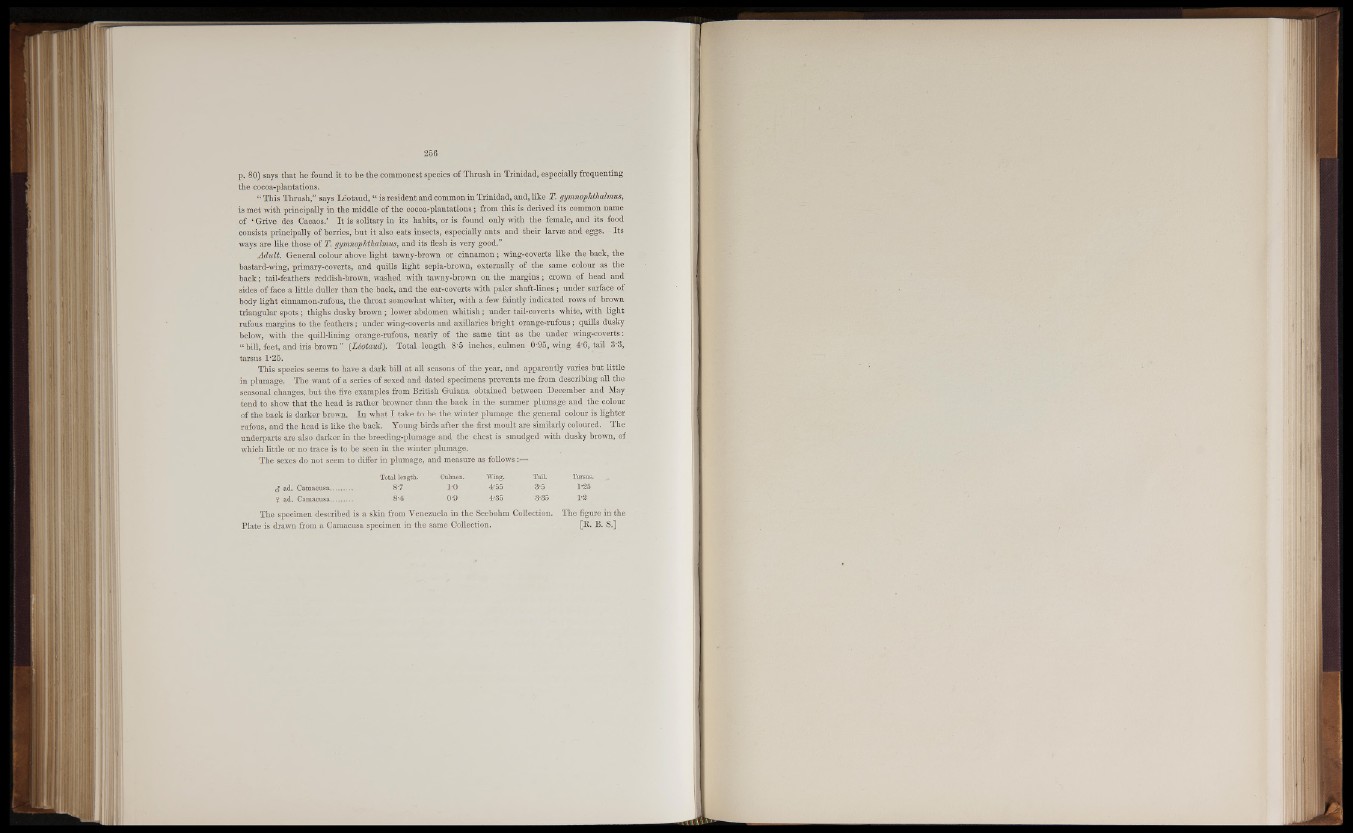
p. 80) says that he found it to be the commonest species of Thrush in Trinidad, especially frequenting
the cocoa-plantations.
“ This Thrush,” says Leotaud, “ is resident and common in Trinidad, and, like T. gymnophthalmus,
is met with principally in the middle of the cocoa-plantations; from this is derived its common name
of ‘ Grive des Cacaos.’ It is solitary in its habits, or is found only with the female, and its food
consists principally of berries, but it also eats insects, especially ants and their larvae and eggs. Its
ways are like those of T. gymnophthalmus, and its flesh is very good.”
Adult. General colour above light tawny-brown or cinnamon; wing-coverts like the back, the
bastard-wing, primary-coverts, and quills light sepia-brown, externally of the same colour as the
back; tail-feathers reddish-brown, washed with tawny-brown on the margins; crown of head and
sides of face a little duller than the back, and the ear-coverts with paler shaft-lines ; under surface of
body light cinnamon-rufous, the throat somewhat whiter, with a few faintly indicated rows of brown
triangular spots; thighs dusky brown • lower abdomen whitish; under tail-coverts white, with light
rufous margins to the feathers; under wing-coverts and axillaries bright orange-rufous; quills dusky
below, with the qujE-lining orange-rufous, nearly of the same tint as the under wing-coverts:
“ bill, feet, and iris brown ” (Leotaud). Total length 8*5 inches, culmen 0-95, wing 4*6, tail 3*3,
tarsus 1*25.
This species seems to have a dark bill at all seasons of the year, and apparently varies but little
in plumage. The want of a series of sexed and dated specimens prevents-me from describing all the
seasonal changes, but the five examples from British Guiana obtained between December and May
tend to show that the head is rather browner than the back in the. summer plumage and the colour
of the back is darker brown. In what I take to be the winter plumage the general colour is lighter
rufous, and the head is like the back. Young birds after the first moult are similarly coloured. The
underparts are also darker in the breeding-plumage and the chest is smudged with dusky brown, of
which little or no trace is to be seen in the winter plumage.
The sexes do not seem to differ in plumage, and measure as follows :—•
Total length. Culmen. Wing. Tail. Tarsus. .
ad. Camacusa 8*7 TO 4*55 3*5 ^ 1*25
? ad. Camacusa 8*4 0*9 4*35 3*35 1*2
The specimen described is a skin from Venezuela in the Seebohm Collection. The figure in the
Plate is drawn from a Camacusa specimen in the same Collection. [P. B. S.]